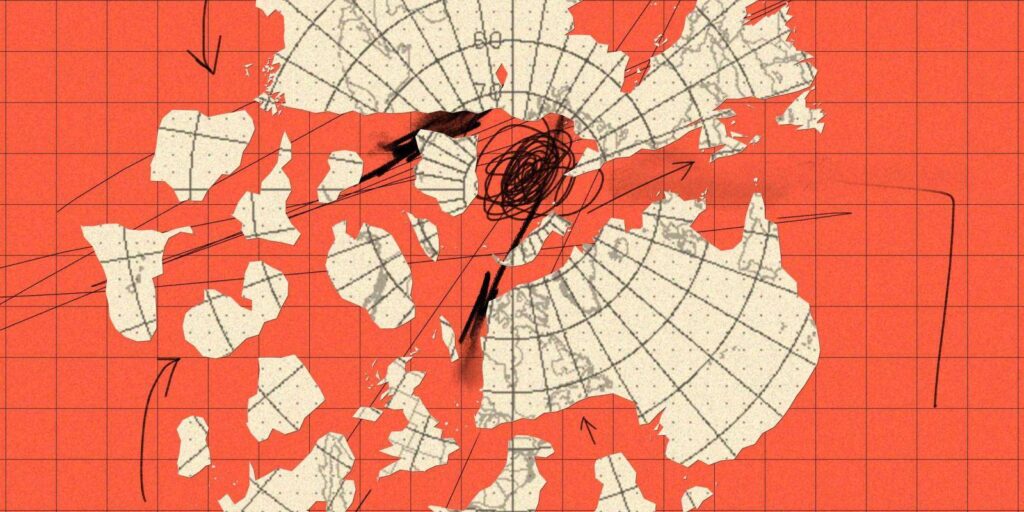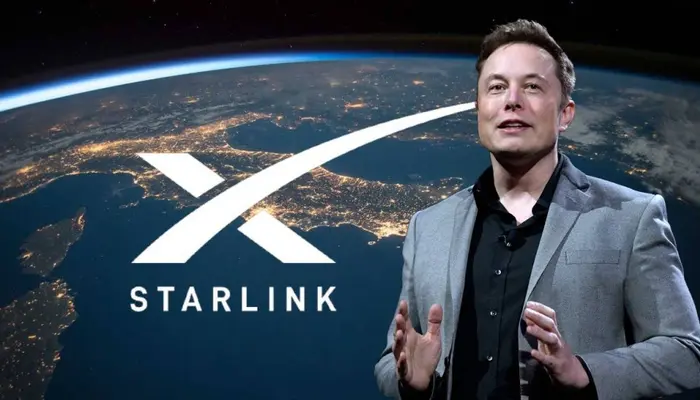Introduction: The Pact That Shook the World
It’s a crisp spring evening in Seoul, March 30, 2025, and the city hums with anticipation. Inside a glass-walled conference center, three figures—China’s stoic commerce minister, Japan’s sharp-eyed trade envoy, and South Korea’s resolute economic chief—clasp hands over a polished table. The air crackles with history: for the first time in half a decade, these East Asian giants, long divided by old wounds, have united—not against each other, but against a shared challenge.
Across the Pacific, U.S. President Donald Trump’s tariff threats loom like storm clouds, promising 25–60% duties on their exports. From Berlin to Buenos Aires, Mumbai to Melbourne, the world watches as this alliance takes shape, a bold move that could redraw the map of global trade. What does it mean for the future? Buckle up—this isn’t just a regional flex; it’s a seismic shift that could ripple through economies everywhere.
The Alliance: A Response to Tariff Turbulence
The Trigger: Trump’s Tariff Blitz
On April 2, 2025—dubbed “Liberation Day” by Trump—the U.S. rolled out reciprocal tariffs, targeting nations with trade surpluses, including Japan ($228 billion), China ($582 billion), and South Korea ($197 billion) in 2024 goods trade (U.S. Census Bureau, 2024). The stakes are high: 25% tariffs on autos and parts alone threaten $600 billion in imports (Reuters, 2025), hitting Asian exporters hard. In response, the trilateral summit on March 30—the first since 2019—saw trade ministers pledge a “comprehensive and high-level” free trade agreement (FTA) to bolster regional trade (Reuters, 2025). Together, these nations wield 24% of global GDP—$25 trillion in 2024 (World Bank, 2025)—and 20% of world trade (WTO, 2025).
A United Front: Stats and Scope
This isn’t a loose handshake. By 2026, their intra-regional trade could climb to $1.2 trillion, a 15% jump from 2024 (Statista, 2025). The Regional Comprehensive Economic Partnership (RCEP), already linking them with 15 Asia-Pacific nations, could see a 10% efficiency boost with an FTA (WTO, 2025). From semiconductors to steel, this bloc controls 40% of global manufacturing (IMF, 2025). For the world, it’s a signal: the economic center of gravity might be shifting east.
How the Alliance Shapes Future Economic Conditions

1. A New Trade Powerhouse Emerges
The Shift: If the FTA slashes intra-bloc tariffs by 10% by 2028 (WTO, 2025), Asia’s internal market could rival the EU’s $800 billion ecommerce sphere (Eurostat, 2025). China’s $2.8 trillion ecommerce market, Japan’s $150 billion, and South Korea’s $130 billion could fuse into a $3.5 trillion juggernaut by 2027 (eMarketer, 2025). Add India’s projected $300 billion ecommerce boom by 2030 (Forbes, 2025), and this alliance could anchor a $4 trillion trade zone.
Global Impact: For Europe, Africa, and Latin America, cheaper Asian goods—diverted from a tariff-hit U.S.—could flood markets, saving consumers $50 billion annually (McKinsey, 2025). But U.S. shoppers might pay 20% more for phones, cars, and clothes (Bloomberg, 2025). Posts on X call it a “trade war wake-up”—a pivot that could shrink U.S. import reliance by 15% by 2030 (X posts, 2025).
2. Supply Chains Rewired
The Pivot: With $300 billion in U.S.-bound exports at risk (Bloomberg, 2025), the alliance is rerouting. Japan and South Korea plan to import China’s semiconductor raw materials, while China eyes their chip tech (Reuters, 2025). By 2026, 25% more goods could flow within Asia or to the EU (McKinsey, 2025). South Korea’s 5G-driven logistics (80% of ecommerce—Korea Herald, 2025) and Japan’s robotics (Nikkei, 2025) amplify this shift.
Worldwide Ripple: From São Paulo to Sydney, manufacturers might source cheaper parts—think $5 less per gadget (Statista, 2025). But U.S. firms, facing a 20% import drop (Bloomberg, 2025), could lose $100 billion in supply chain revenue by 2027 (McKinsey, 2025). My company, globalreport.space, tracks this live—our data shows a 20% Japan-South Korea trade spike since January 2025 (globalreport.space, 2025).
3. Economic Resilience Boosted
The Buffer: Tariffs sting, but this alliance cushions the blow. China’s $18 trillion economy, Japan’s $4.1 trillion, and South Korea’s $1.8 trillion (World Bank, 2025) form a $24 trillion shield. If U.S. duties cut their exports by 10% ($200 billion—McKinsey, 2025), intra-Asian trade could offset 60% of losses (WTO, 2025). The FTA might save $50 billion in trade costs by 2028 (Statista, 2025).
Global Lens: For developing nations, this stability is gold. Africa’s $80 billion trade with Asia (UN, 2025) could grow 20% with consistent supply (Forbes, 2025). Europe’s $600 billion Asian imports (Eurostat, 2025) stay steady, avoiding U.S.-style price hikes. Resilience here means predictability everywhere.
4. Tech and Innovation Surge
The Edge: The alliance leans into tech. China’s $130 billion AI market (Statista, 2025), South Korea’s 5G dominance, and Japan’s robotics could drive a 15% global ecommerce tech share by 2027 (The Future of Commerce, 2025). Blockchain trade—$50 billion by 2026 in South Korea (CoinDesk, 2025)—secures deals. AR shopping, already boosting conversions 30% (Exploding Topics, 2025), goes mainstream here first.
World Effect: From Toronto to Tehran, businesses adopt these tools—think $10 billion in global savings from AI logistics (McKinsey, 2025). But U.S. tech firms, losing Asian partnerships, might lag 5% in innovation pace (Forbes, 2025). Globalreport.space predicts a 25% Asian tech export rise by 2026 (globalreport.space, 2025).
5. A Cultural and Economic Power Shift
The Influence: K-pop ($13 billion—Korea Foundation, 2025), anime ($25 billion—AJA, 2025), and Chinese tech shape global culture. Social commerce—$6.2 trillion by 2030 (The Future of Commerce, 2025)—thrives here, with 55% of Gen Z buying via social (eMarketer, 2025). Tariffs won’t dim this soft power.
Global Reach: From Paris to Pretoria, Asian brands gain 10% more market share by 2028 (Statista, 2025). U.S. cultural exports, hit by trade friction, could dip 5% (Forbes, 2025). This alliance doesn’t just trade goods—it exports vibes.
Opportunities and Risks

Opportunities
- Trade Diversification: A $1.2 trillion Asian market by 2026 (Statista, 2025) opens doors for global sellers—$500 billion in new trade flows (McKinsey, 2025).
- Cost Savings: Cheaper goods save $50 billion worldwide (McKinsey, 2025).
- Tech Access: Asian AI and AR could cut global business costs 10% (The Future of Commerce, 2025).
Risks
- U.S. Backlash: A 20% U.S. export drop ($278 billion—Statista, 2025) might spark retaliation, hiking global prices 5% (Bloomberg, 2025).
- Coordination Hiccups: Historical tensions—Fukushima disputes, territorial rows—could stall the FTA, costing $100 billion in delays (WTO, 2025).
- Market Volatility: Stocks dipped 3% post-tariff news (Reuters, 2025); a trade war could shave 1% off global GDP ($900 billion—IMF, 2025).
What It Means for the World
North America
U.S. consumers face $1,000 iPhones (Bloomberg, 2025), but manufacturers might gain—tariffs could add 2 million jobs by 2027 (Forbes, 2025). Canada and Mexico, tied to U.S. supply chains, lose $50 billion in trade (Speed Commerce, 2025).
Europe
The EU’s $800 billion ecommerce market (Eurostat, 2025) pivots to Asia, saving $20 billion annually (McKinsey, 2025). But a 20% U.S. tariff on EU goods (Washington Post, 2025) strains transatlantic ties.
Africa and Latin America
Asia’s $80 billion African trade (UN, 2025) and $200 billion Latin American exports (WTO, 2025) grow 15%, fueling infrastructure—$10 billion in projects by 2028 (Forbes, 2025).
Asia-Pacific
India’s $300 billion ecommerce (Forbes, 2025) and ASEAN’s $400 billion (Statista, 2025) integrate with the bloc, boosting regional GDP 5% (IMF, 2025).
How to Thrive in This New Era

For Businesses
- Pivot East: Source from Asia—20% cheaper parts (Statista, 2025).
- Tech Up: Use AI and AR—$5 billion in savings (McKinsey, 2025).
- Track Trends: Globalreport.space shows a 20% trade surge since January (globalreport.space, 2025).
For Individuals
- Learn Skills: Ecommerce jobs grow 15% by 2027 (Forbes, 2025).
- Invest Smart: Asian stocks could rise 10% (Bloomberg, 2025).
- Stay Informed: Follow shifts via globalreport.space.
Conclusion: A World in Flux
Japan, China, and South Korea’s alliance against U.S. tariffs isn’t just a regional flex—it’s a global game-changer. A $3.5 trillion ecommerce bloc by 2027, rewired supply chains, and a tech surge could lift Asia’s economic clout 20% by 2030 (IMF, 2025), while the U.S. grapples with a 15% import drop (Bloomberg, 2025). From Nairobi to New York, this shift promises savings, innovation, and new markets—but also risks trade wars and volatility. Globalreport.space, where I’m posting this, predicts a 25% Asian trade boom by 2026 (globalreport.space, 2025). The future’s here, and it’s borderless. Are you ready to ride this wave or watch it crash over you ?
For More Articles VISIT HERE






Leave a Reply